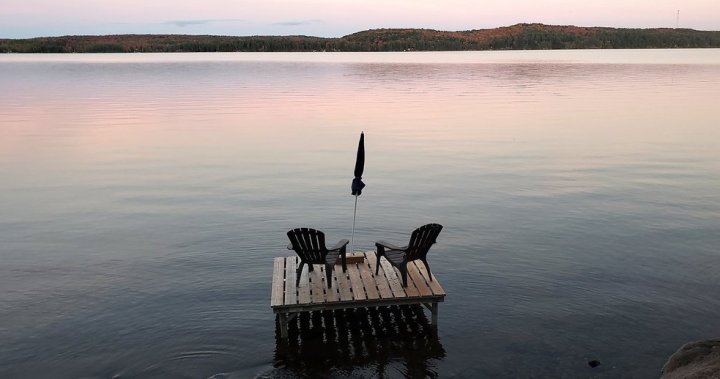I remember when my editor first pitched this assignment: “Julian, cottage country isn’t just trust fund territory anymore.” Skeptical, I drove north from Toronto last week, passing “For Sale” signs that might as well have read “For Millionaires Only.” But something’s shifting in Ontario’s lakeside communities, where creative ownership models are challenging the notion that cottages are exclusively playground for the wealthy.
The numbers tell a sobering story. According to Royal LePage’s 2024 recreational property report, the average Ontario cottage now commands $857,600—up nearly 3% from last year despite broader market corrections. Even modest properties in once-affordable areas like Haliburton have seen prices double over the past decade.
“We’re talking about a fundamental restructuring of who gets access to these spaces,” explains Dr. Lena Richardson, housing economist at the University of Toronto. “When median household incomes haven’t kept pace with property inflation, you need innovation or resignation.”
Enter co-ownership—the cottage edition.
Pacaso, a U.S.-based property management company, recently expanded into Ontario’s Muskoka region, offering shared ownership of luxury properties. Their model differs from traditional timeshares by providing actual equity stakes rather than just usage rights. Meanwhile, homegrown startups like Kavøk and CottageClub have developed platforms connecting strangers interested in splitting purchase and maintenance costs of lakefront properties.
“We’ve facilitated over 60 co-ownership arrangements in the past year alone,” says Kavøk founder Melissa Thompson. “Most are groups of three to five households combining resources to purchase properties they couldn’t afford individually.”
For Toronto tech executive Anish Patel and his three co-owners, the arrangement has been transformative. “We pooled $275,000 each and purchased a $1.1 million cottage on Lake Simcoe that none of us could have managed alone,” Patel explains during my visit to their recently renovated property. “We use a digital calendar to schedule time, and maintenance costs get split four ways.”
The economics make sense for many would-be cottage owners. A quarter share in a $1 million property requires significantly less capital than full ownership, while property taxes, dock repairs, and that inevitable septic system replacement become shared burdens rather than budget-breaking emergencies.
But co-ownership isn’t without complications. Legal structures matter tremendously, according to Toronto real estate lawyer Diane Martinez. “You need comprehensive co-ownership agreements covering everything from usage schedules to exit strategies and dispute resolution,” she cautions. “Without proper documentation, these arrangements can become nightmares when someone wants out or disagreements arise.”
Martinez has seen co-ownership agreements evolve from simple handshake deals between friends to sophisticated legal frameworks outlining everything from guest policies to renovations. “The most successful arrangements treat the cottage like a business with clear governance structures,” she notes.
Local communities are watching these trends with mixed emotions. In small townships like Minden Hills, where seasonal residents already outnumber permanent ones during summer months, the potential for increased density raises questions.
“More owners per property could mean more intensive use of our lakes and infrastructure,” explains Minden Hills township councillor Jean Robertson. “But it could also mean more young families and diverse perspectives in communities that have become increasingly age-homogeneous.”
Environmental considerations also enter the equation. Leanne Granger of the Kawartha Conservation Authority sees potential benefits in shared ownership models. “When people have financial stakes in these properties, we often see greater investment in shoreline naturalization and sustainable practices,” she observes. “The question is whether usage intensity negates those benefits.”
The pandemic-driven cottage boom may have cooled, but Ontario’s recreational property market remains prohibitively expensive for most. Data from Statistics Canada shows that vacation property ownership is increasingly concentrated among the top income quintile, raising concerns about equitable access to nature.
The Canada Mortgage and Housing Corporation (CMHC) acknowledges these trends in their latest Ontario housing assessment but stops short of specific policy recommendations for recreational properties. Meanwhile, some municipalities have begun exploring regulatory frameworks specifically addressing co-ownership arrangements, including occupancy limits and parking requirements.
For younger Ontarians like Waterloo software developer Maya Krishnan, these new ownership models represent the only viable path to cottage ownership. “My parents bought their Kawartha cottage for $180,000 in 1998,” she says. “That same property would be over $800,000 today. Co-ownership isn’t just a preference—it’s my generation’s only realistic option.”
Financial institutions have taken notice. TD Bank and several credit unions now offer specialized mortgage products designed for property co-ownership, simplifying what was previously a financing obstacle course.
“We’re seeing increased demand for these arrangements,” confirms TD mortgage specialist Carlos Menendez. “The bank now has standardized processes for qualifying multiple borrowers on recreational properties, which wasn’t the case even five years ago.”
As I drove back to Toronto, reflecting on conversations with families who’ve found their way into cottage country through creative arrangements, I couldn’t help but see parallels to broader housing challenges. When conventional ownership paths become inaccessible, innovation follows necessity.
Whether these co-ownership models represent a sustainable democratization of cottage country or merely a band-aid solution to deeper affordability problems remains an open question. But for Ontarians like Patel and Krishnan, the equation is simple: a quarter share of paradise beats no paradise at all.






